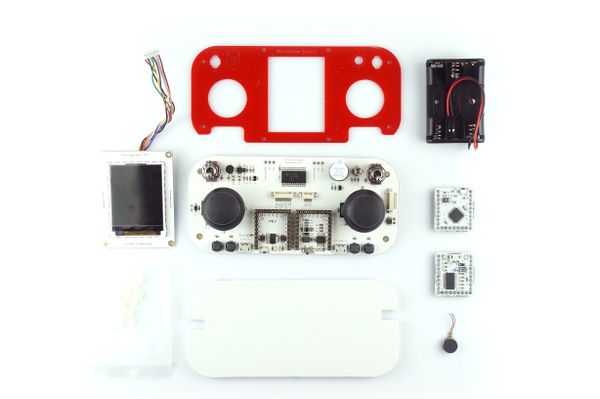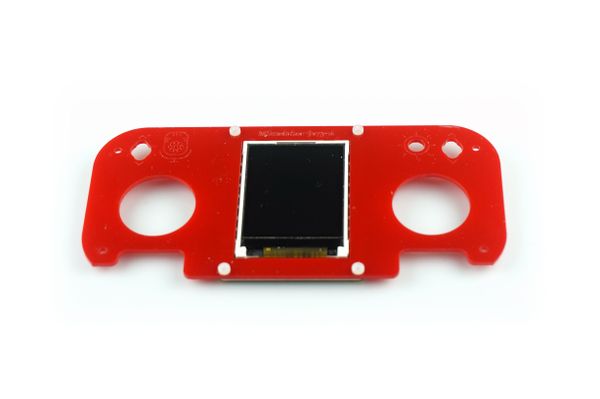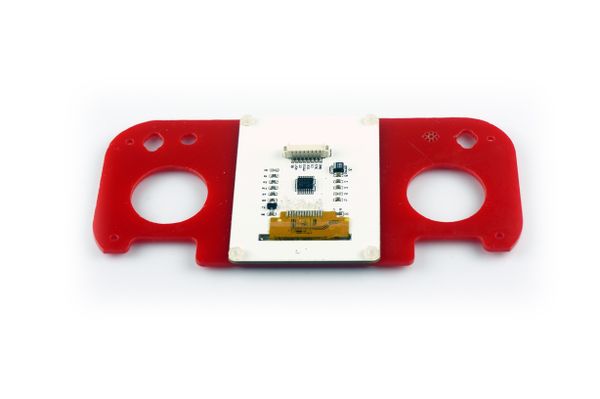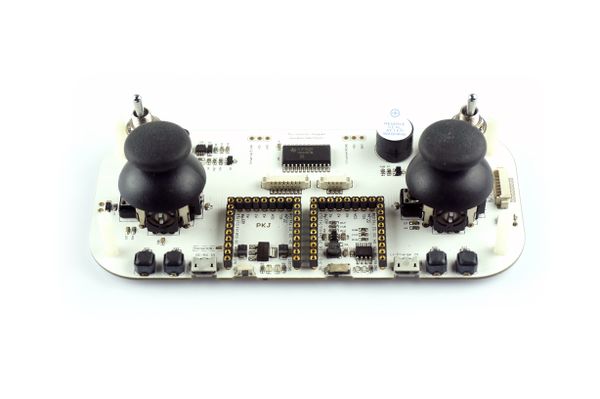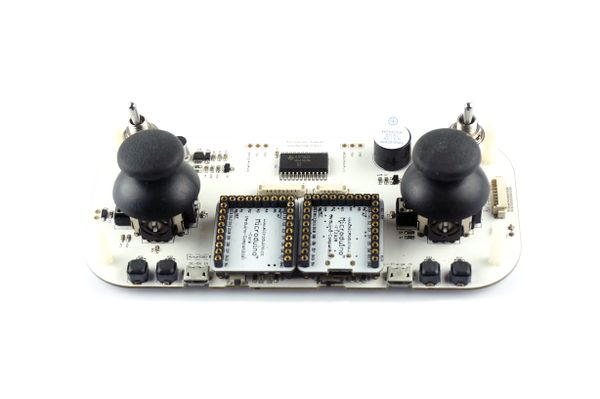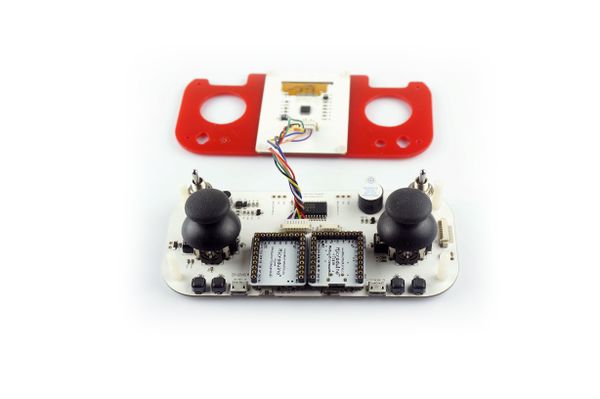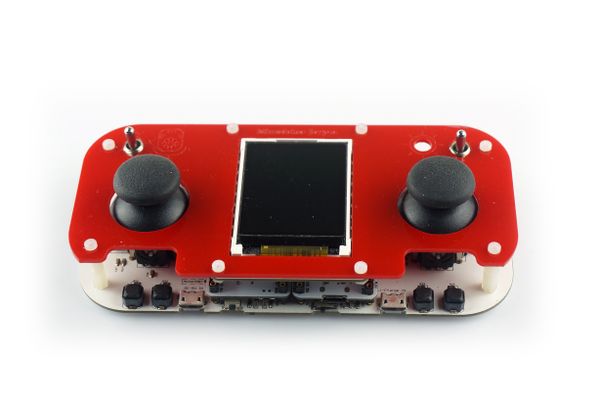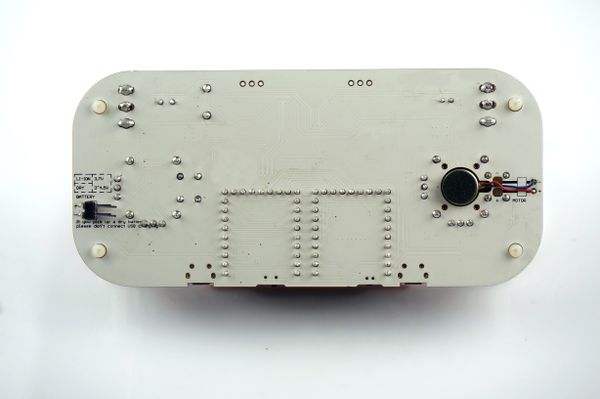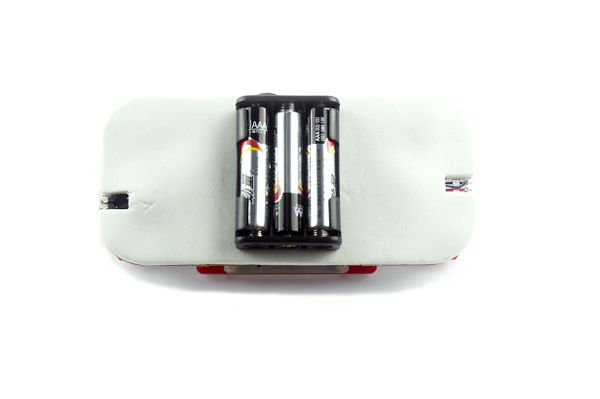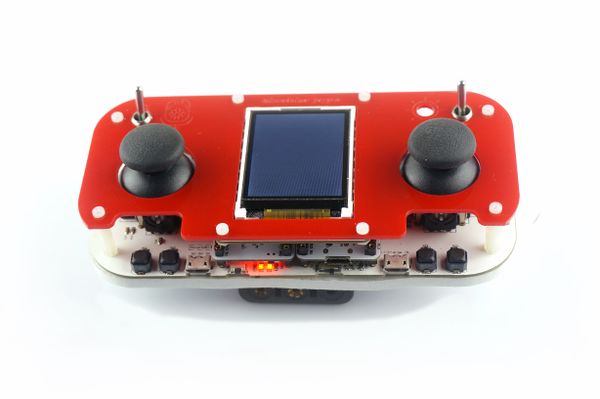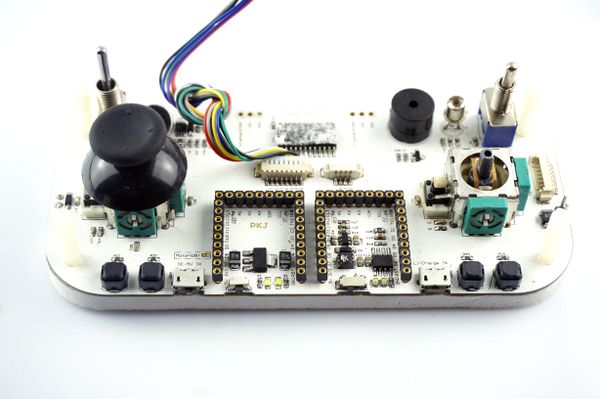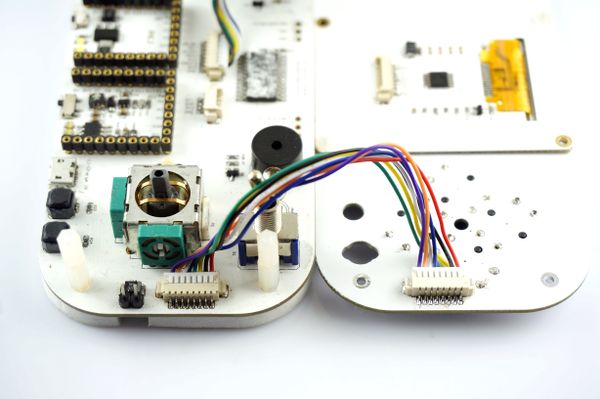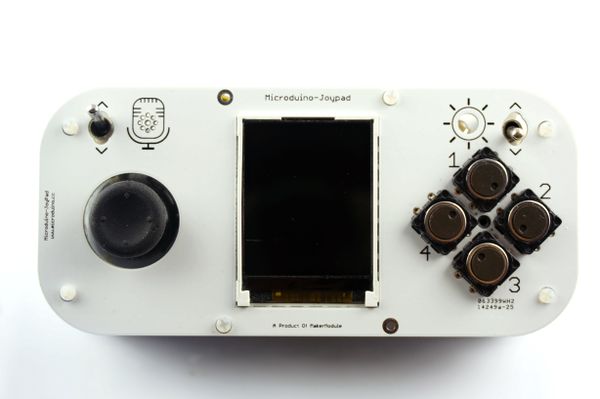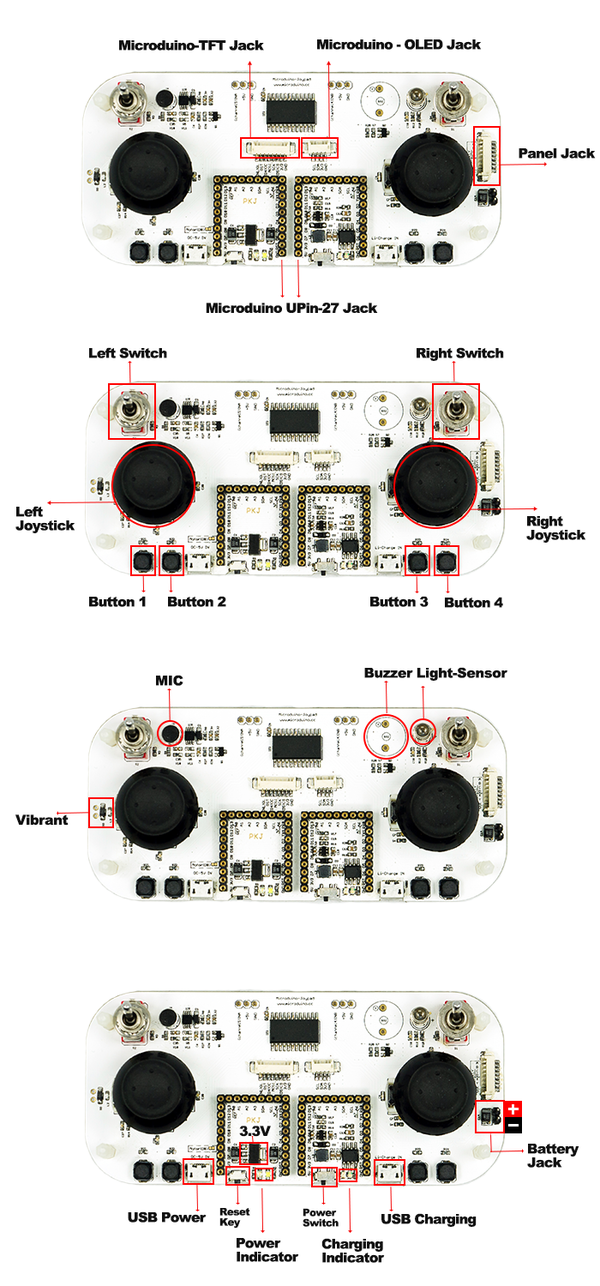Microduino-Joypad Getting start
From Microduino Wiki
Revision as of 02:58, 25 November 2014 by 1304410487@qq.com (talk)
Test
You will need _01_Microduino_TFT and _08_Microduino_Shield_Joypad library.
Program Description
//Left analog joystick----------------
Joypad.readJoystickX();
Joypad.readJoystickY();
//Right analog joystick----------------
Joypad.readJoystick1X();
Joypad.readJoystick1Y();
Joypad.readButton(byte ch);
//Left analog joystick----------------
JOYSTICK_UP;
JOYSTICK_DOWN;
JOYSTICK_LEFT;
JOYSTICK_RIGHT;
//Left analog joystick press------------
CH_JOYSTICK_SW
//Right analog joystick----------------
JOYSTICK1_UP;
JOYSTICK1_DOWN;
JOYSTICK1_LEFT;
JOYSTICK1_RIGHT;
//Right analog joystick press ------------
CH_JOYSTICK1_SW
//Switch ------------------
CH_SWITCH_L;
CH_SWITCH_R;
//Four groups of buttons------------------
CH_SWITCH_1;
CH_SWITCH_2;
CH_SWITCH_3;
CH_SWITCH_4;
//==========================
//Buzzer---------------------
Joypad.tone(unsigned int freq);
Joypad.tone(unsigned int freq, unsigned long duration);
Joypad.noTone();
//Vibration------------------------
Joypad.motor(unsigned int motor_vol);
“unsigned int motor_vol”:Vibration intensityStart Application |
